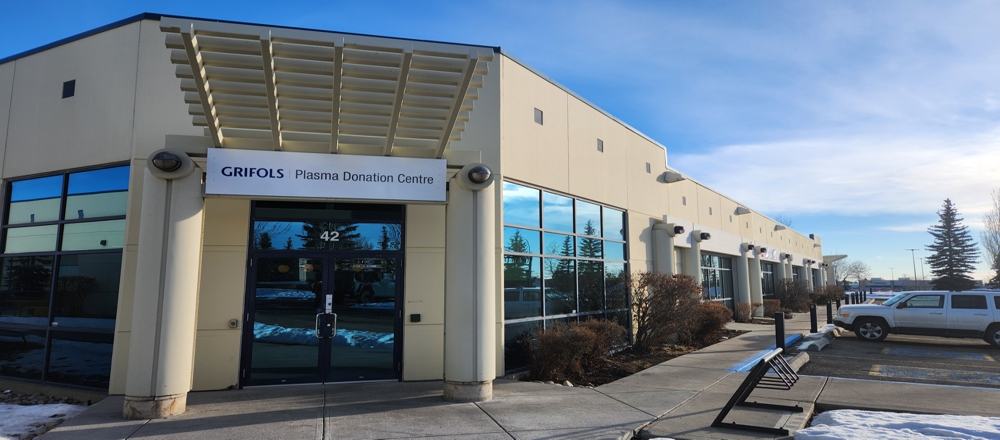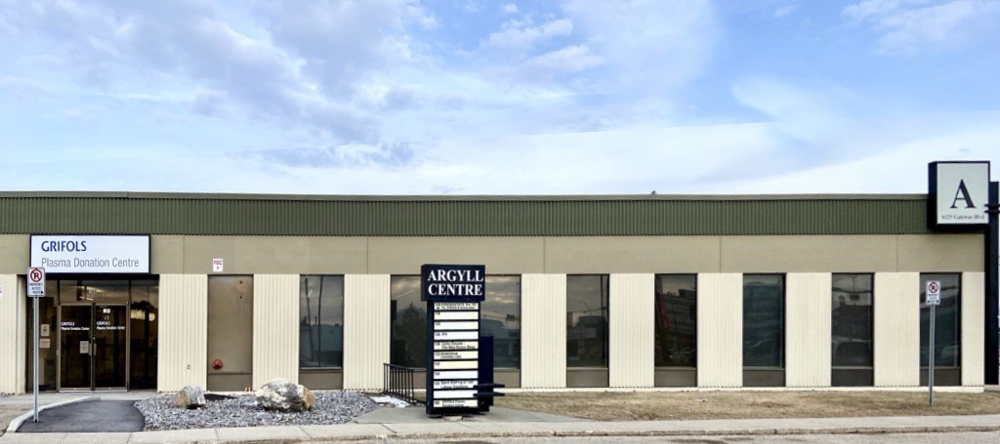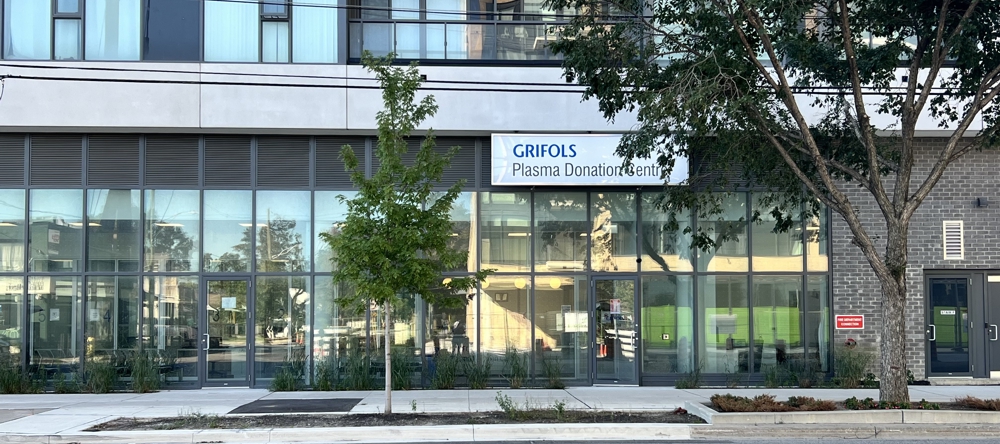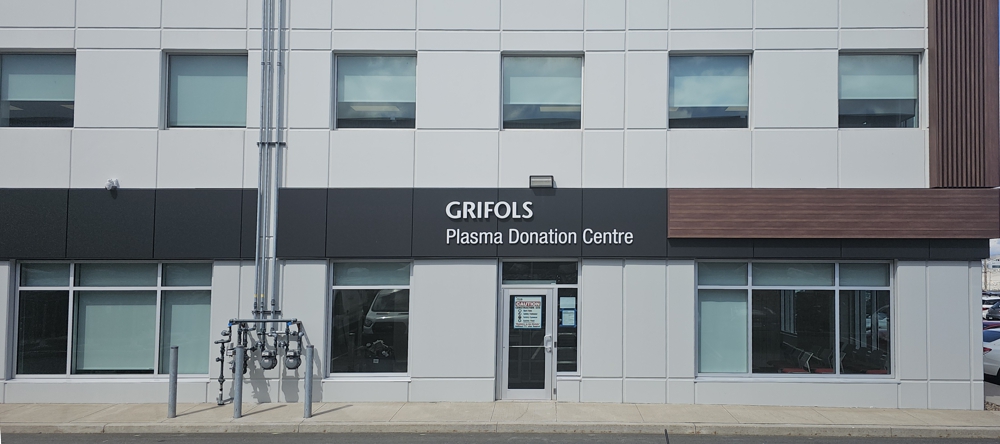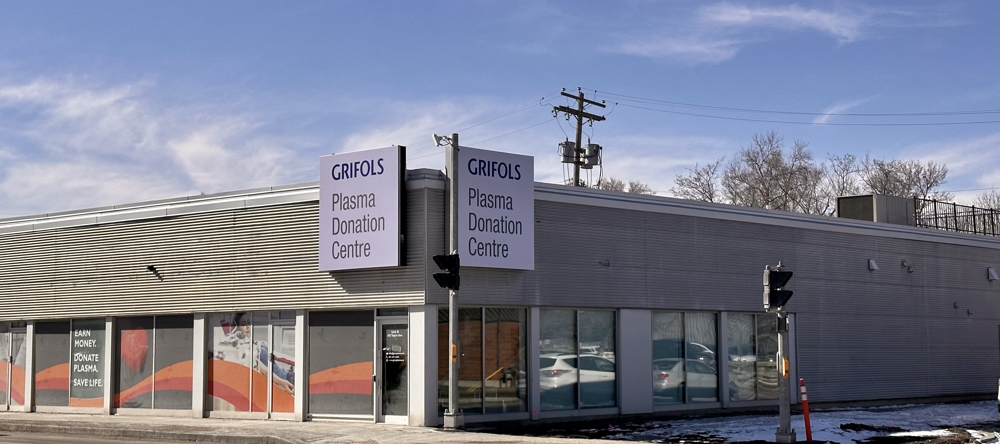FAQ
What is source plasma?
Source plasma is collected from donors.
Source plasma collected at Grifols are the raw material manufactured into life-saving therapies.
Source plasma collected at Grifols is NOT used for transfusion.
Who needs source plasma?
Tens of thousands Canadian patients and millions around the world rely on therapies manufactured from source plasma. This include:
- immune deficiencies.
- autoimmune disorders.
- respiratory disorders.
- hemophilia.
- liver disorders.
- surgical bleeding.
- burns and shock.
Some therapies can only be derived from human source plasma.
Why donate plasma?
Plasma donated by healthy donors can help others with serious medical needs.
Canada is dependent on other countries for plasma protein products. Those products are manufactured from paid donors in that US.
Because Canada is dependent on foreign sources, if there was a worldwide shortage of plasma or plasma protein therapies, the health and quality of life of many Canadian patients would be jeopardized.
By becoming a plasma donor, you can help Canada satisfy its own needs for plasma therapies.
Who can donate plasma at Grifols?
Grifols only accepts healthy donors who:
- are between 17 and 68 years of age.
- weigh at least 110 pounds.
- have a permanent address within 100 kilometres of a Grifols facility.
- present valid photo identification, proof of address, social insurance card.
qualify to donate. This is determined by a process that includes a questionnaire, an interview, a medical examination and testing on two separate occasions within a 26-week period.
What can I expect on a typical donation day?
For your first visit, schedule two hours. Your next visit should take about one hour.
There are four steps in the donation process.
- While registering, expect:
- to be asked for valid identification
- to read and fill out some paperwork
- to undergo some preliminary health checks, such as having your blood pressure checked
- During screening, you:
- undergo a physical examination
- meet with medical staff to review paperwork
- have your questions answered
- confirm you are consenting to donate
- While donating, you are:
- connected to a plasmapheresis machine
- passing time by reading, watching TV or listening to music
- monitored by medical staff.
- After donating, you:
- relax in the waiting room
- enjoy refreshments
Is donating safe?
Yes!
Plasmapheresis, like any other procedure, may have some associated risks. However, these risks are low and the procedure has minimal to no side effects.
Trained medical staff working at our facility are involved in every step of the donation process. Before you donate, they’ll explain the risks involved as well as the entire procedure of donating plasma.
The equipment is certified and sterile, so that your blood never makes contact with non-sterile environments.
Grifols is licensed by Health Canada, the same body which regulates Canadian Blood Services. Health Canada inspects our facilities to ensure we comply with all national and international regulations.
What is plasmapheresis?
During plasmapheresis, a donor is connected to a specialized machine. A donor’s blood enters the machine where the plasma is separated from the other blood components, which are returned to the body.
The blood is always in a sterile environment. The volume of plasma removed during plasmapheresis depends on a person’s body weight.
Donors are monitored at all times by medical professionals trained in this process as well as in patient care and comfort.
What if I feel unwell?
Before donating, eat well and be well hydrated. Drink beverages that do not contain caffeine or alcohol.
Come in to donate when you:
- feel well and rested.
- have not consumed alcohol or smoked for eight hours.
- are not on medication for infection.
- have not had dental work in the past two days.
During your donation, medical staff will monitor your condition.
If you feel uncomfortable during the donation, alert the staff immediately so the donation can be stopped.
Grifols is equipped with first aid kits and emergency medications. Staff is trained in CPR (Cardio Pulmonary Resuscitation). We are located near a hospital should further intervention be required.
After donating, should you not feel well, contact Grifols or your family doctor. In the case of an emergency, call 9-1-1.
How often can I donate?
Plasma naturally regenerates in the human body within approximately 48 hours.
At Grifols, individuals may donate plasma up to twice within a rolling 7-day period, provided there is a minimum of two days apart. For example, if you donate on Wednesday and Friday of a given week, your next eligible donation day would be Wednesday of the following week.
How can I donate?
Visit one of our donation centres, call us, or schedule an appointment online.
What if I test positive for a disease?
Your plasma will be tested for HIV, hepatitis A, B and C as well as syphilis and ParvoB19.
Should you test positive for one of these infections, you will be informed in a confidential manner by a physician or a physician substitute. It will be recommended you follow up with your family physician.
Anyone who is positive for HIV or hepatitis A, B or C cannot donate at Grifols.
As part of Canadian regulations, public health agencies will also be informed. You will also be added to the National Donor Deferral Registry to prevent further donations from reactive donors.
Is plasma donation regulated?
Yes.
In Canada, it is regulated under the Blood Regulations. This applies to Canadian Blood Services, Héma-Québec and private companies who collect plasma, such as Grifols.
Grifols is licensed by Health Canada to collect plasma for use in making plasma products
Ensuring that Canadians have access to safe blood has been the cornerstone of Health Canada’s response to the Krever Commission. The current regulations, adopted on October 23, 2014, complete the government’s response to the Krever Commission. Canada continues to be a world leader in blood safety, as recognized by the World Health Organization.

